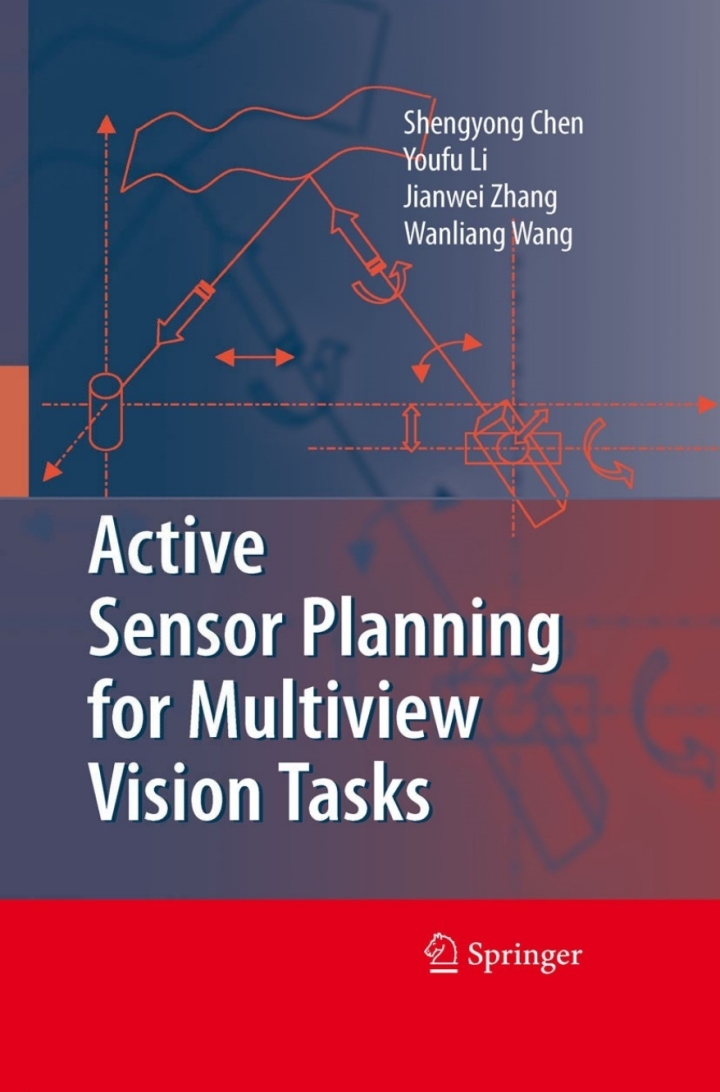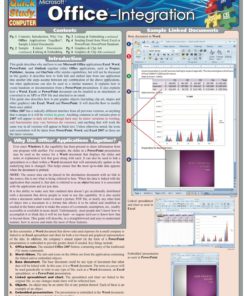Active Sensor Planning for Multiview Vision Tasks eBook
$159.00 Original price was: $159.00.$33.00Current price is: $33.00.
-
Author(s): Shengyong Chen; Y. F. Li; Jianwei Zhang; Wanliang Wang
-
Publisher: Springer
-
Print ISBN: 9783540770718, 3540770712
-
eText ISBN: 9783540770725, 3540770720
Delivery: Can be download immediately after purchasing. For new customer, we need process for verification from 30 mins to 12 hours.
Version: PDF/EPUB. If you need EPUB and MOBI Version, please send contact us.
Compatible Devices: Can be read on any devices.
An active robot system can change its visual parameters in an intentional manner and perform its sensing actions purposefully. A general vision task thus can be performed in an efficient way by means of strategic control of the perception process. The controllable processes include 3D active sensing, sensor configuration and recalibration, automatic sensor placement, and 3D sensing. This book explores these important issues in studying for active visual perception. Vision sensors have limited fields of views and can only “see” a portion of a scene from a single viewpoint. To make the entire object visible, the sensor has to be moved from one place to another around the object to observe all features of interest. The sensor planning presented in this book describes an effective strategy to generate a sequence of viewing poses and sensor settings for optimally completing a perception task. Several methods are proposed to solve the problems in both model-based and nonmodel-based vision tasks. For model-based applications, the method involves determination of the optimal sensor placements and a shortest path through these viewpoints for automatic generation of a perception plan. A topology of viewpoints is achieved by a genetic algorithm in which a min-max criterion is used for evaluation. A shortest path is also determined by graph algorithms. For nonmodel-based applications, the method involves determination of the best next view and sensor settings. The trend surface is proposed as the cue to predict the unknown portion of an object or environment. The 11 chapters in Active Vision Planning draw on recent work in robot vision over ten years, particularly in the use of new concepts of active sensing, reconfiguration, recalibration, sensor model, sensing constraints, sensing evaluation, viewpoint decision, sensor placement graph, model based planning, path planning, planning for robot in unknown environment, dynamic 3D construction,surface prediction, etc. Implementation examples are also provided with theoretical methods for testing in a real robot system. With these optimal sensor planning strategies, this book will give the robot vision system the adaptability needed in many practical applications.
This is a digital product.
Active Sensor Planning for Multiview Vision Tasks is written by Shengyong Chen; Y. F. Li; Jianwei Zhang; Wanliang Wang and published by Springer. The Digital and eTextbook ISBNs for Active Sensor Planning for Multiview Vision Tasks are 9783540770725, 3540770720 and the print ISBNs are 9783540770718, 3540770712.
Be the first to review “Active Sensor Planning for Multiview Vision Tasks eBook” Cancel reply
You must be logged in to post a review.
Related products
Bestsellers
Bestsellers
Bestsellers
Bestsellers












Reviews
There are no reviews yet.